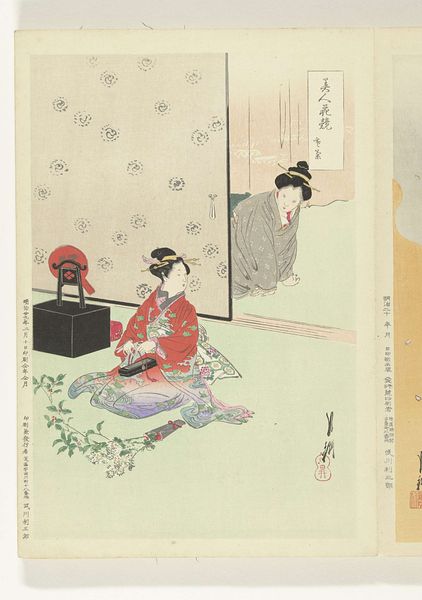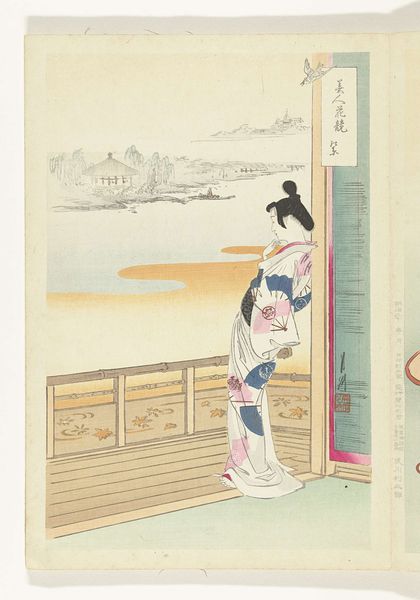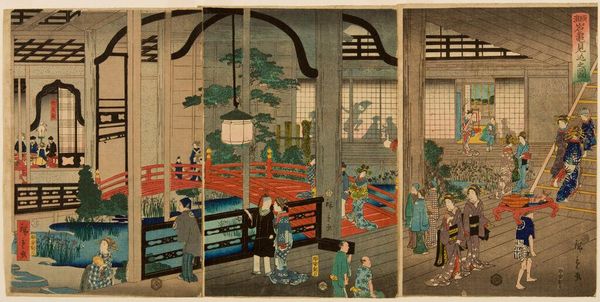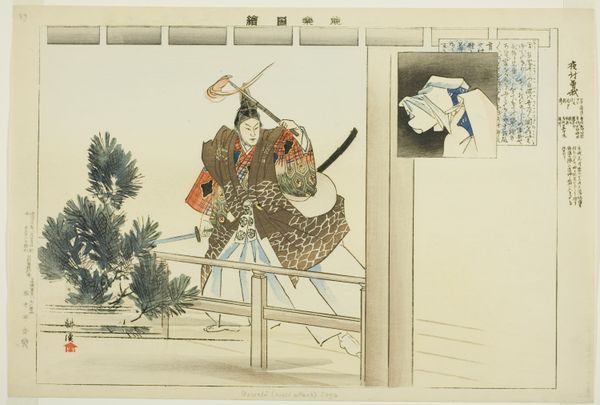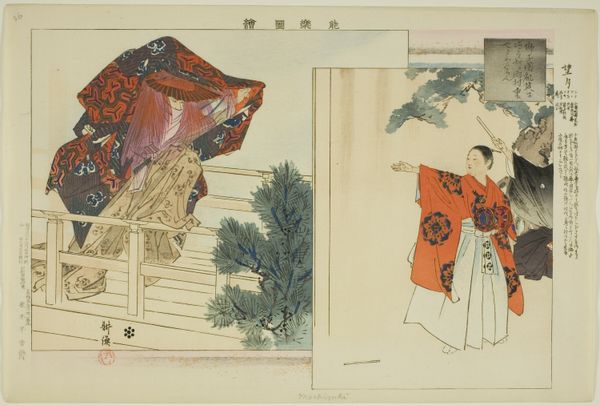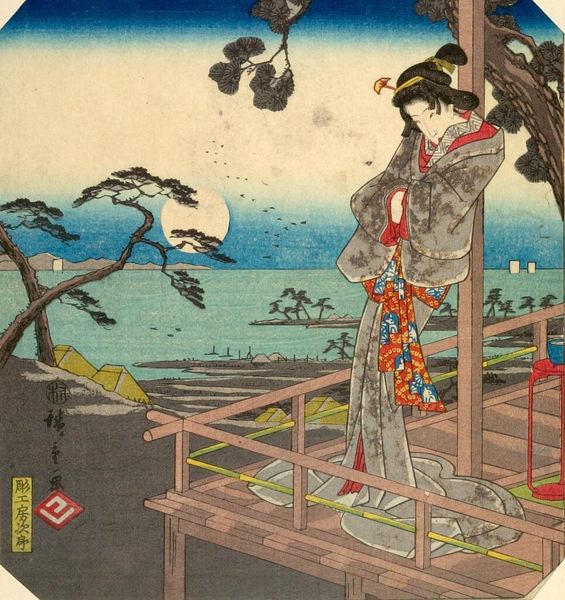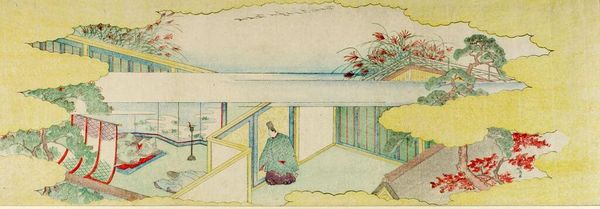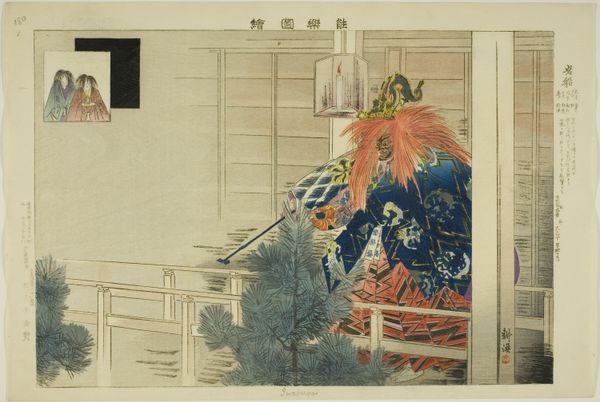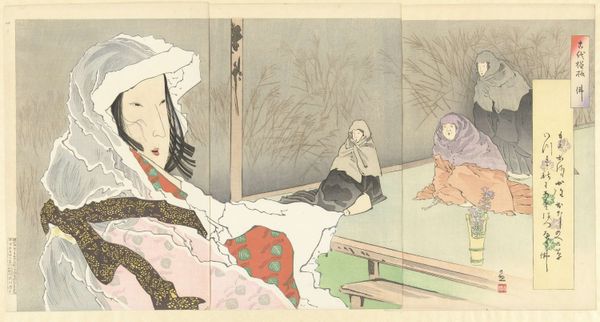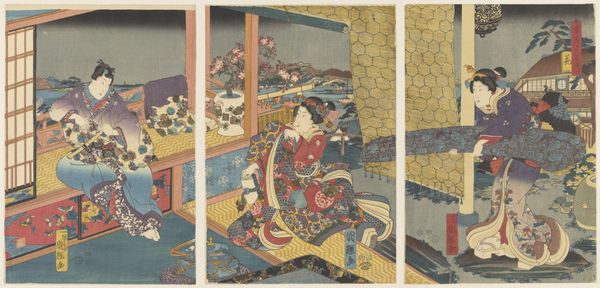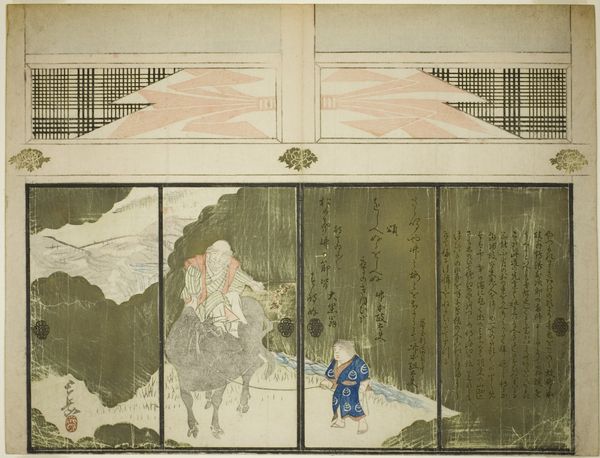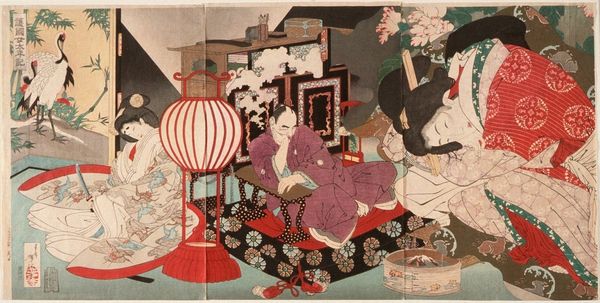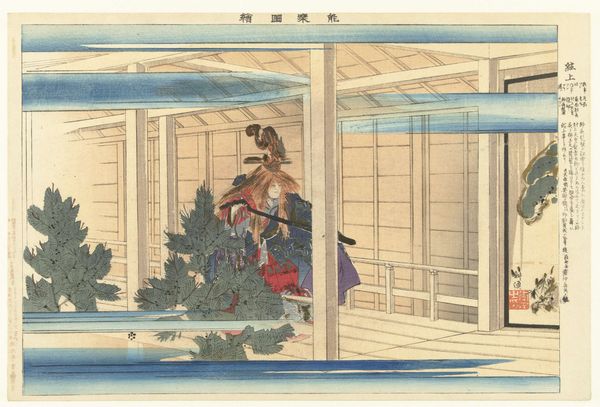
Copyright: Public domain
Ogata Gekko rendered this image of Emperor Go-Daigo during the Meiji period. The image is reflective of the nationalistic sentiments that swept through Japan during this time. Emperor Go-Daigo, who reigned in the 14th century, is depicted in his private quarters. The emperor is shown in a moment of quiet contemplation, with a book, his face resting on his hand in an intimate, reflective pose. Go-Daigo challenged the existing feudal system and is remembered for his attempt to restore imperial power. During the Meiji era, there was a deliberate effort to construct a unified national identity centered around the emperor. This was a period marked by the embrace of Western modernity alongside a resurgence of interest in Japanese history and mythology. Gekko's choice to depict Emperor Go-Daigo, therefore, situates the artwork within a broader cultural project of national identity formation. It’s an appeal to the power and authority of Japan's imperial past. The artist evokes a sense of longing for a perceived golden age.
Comments
No comments
Be the first to comment and join the conversation on the ultimate creative platform.
